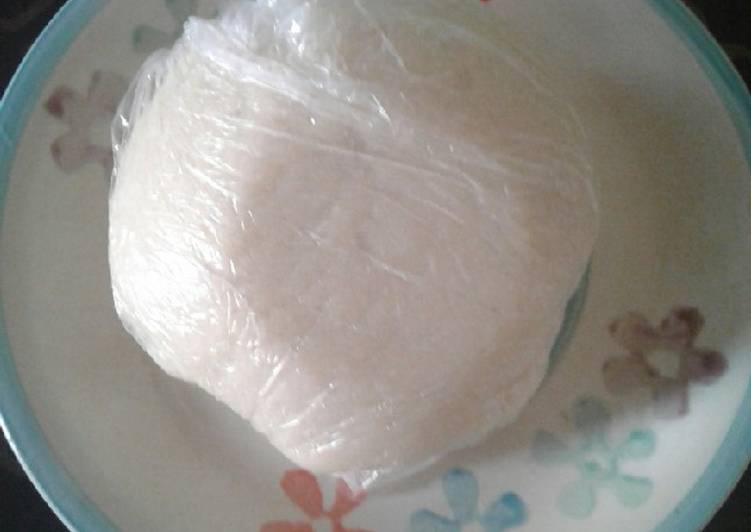Cassava swalow (oje abasha)
Cassava swalow (oje abasha). The most common type of fufu is the cassava fufu which is made from processed cassava. Fufu is not so sweet on its own, it is usually accompanied with The video above will show you how to make the best Nigerian fufu from scratch with cassava. Watch to the end, SUBSCRIBE to (Onyx Food Hill).
 Additionally, cassava root is well known as the raw material that's used to produce tapioca and garri, a product similar to tapioca. As there are many islands in the Caribbean, so too are there many recipes for making Pone. In this recipe, all the basics are covered to give you a mouth-watering slice of Cassava Pone. You can cook Cassava swalow (oje abasha) using 3 ingredients and 4 steps. Here is how you cook that.
Additionally, cassava root is well known as the raw material that's used to produce tapioca and garri, a product similar to tapioca. As there are many islands in the Caribbean, so too are there many recipes for making Pone. In this recipe, all the basics are covered to give you a mouth-watering slice of Cassava Pone. You can cook Cassava swalow (oje abasha) using 3 ingredients and 4 steps. Here is how you cook that.
Ingredients of Cassava swalow (oje abasha)
- It's of Cassava flour.
- It's of Semovita (optional).
- Prepare of Water.
We are accepting rentals of our beautiful terrace! Find cassava root stock images in HD and millions of other royalty-free stock photos, illustrations and vectors in the Shutterstock collection. Thousands of new, high-quality pictures added every day. Cassava is a tuberous, woody, shruby perennial plant, Manihot esculenta, of the Euphorbiaceae (spurge family), characterized by palmately lobed leaves, inconspicuous flowers, and a large, starchy, tuberous root with a tough, papery brown bark and white to yellow flesh.
Cassava swalow (oje abasha) step by step
- Put water in a pot and allow to boil (note. Your water must boil).
- Put semovita in a bowl, add water to make a paste then pour into the boiling water. Stir till it thickens to avoid lumps..
- Allow to boil for sometime then add cassava flour in little quantities till its firm. If you don't have semovita, cassava flour can be added once the water starts to boil..
- Serve with any soup of your choose..
Cassava Fintech - Pioneering Africa's fintech revolution, one payment solution at a time. A safe, secure and convenient way to send funds from the UK/EU. Cassava is an important food security crop for Africa grown by many small-holder farmers. In short, given a cassava leaf image can you predict the disease incidence. A secondary task (to run after this challenge) would be to build a model that simultaneously predicts the disease incidence and severity.